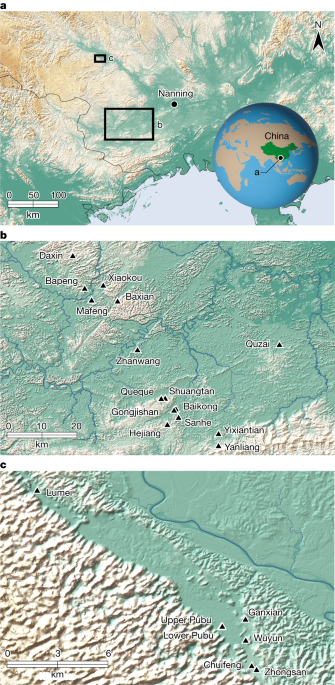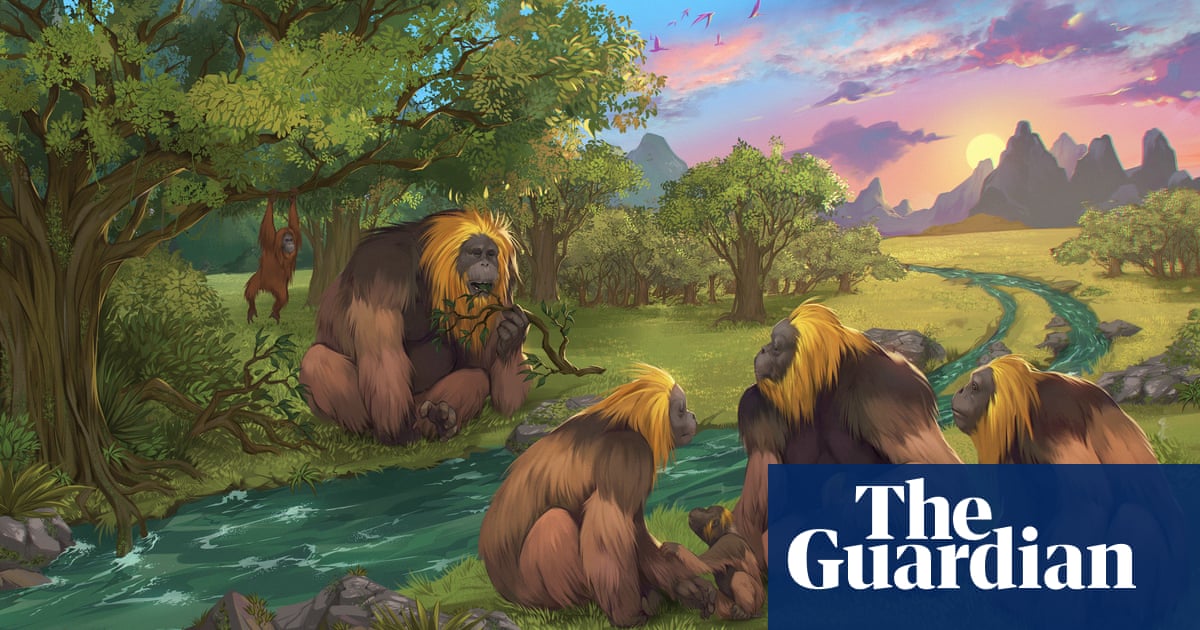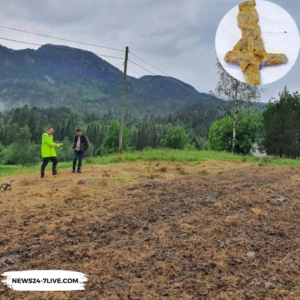The colossal Gigantopithecus blacki, often referred as the “real King Kong,” once roamed the lush forests of southern China, standing nearly 10 feet tall and weighing as much as a grizzly bear. Discovered over a century ago by German-Dutch paleontologist G.H.R. von Koenigswald, the Gigantopithecus has the imaginations of scientists.

Also Read: Noah’s Ark Found? 5,000-Year-Old Boat-Shaped Mound in Turkey
However, the mystery surrounding the extinction of this giant ape has persisted for decades, making an international team of researchers to go into the caves of Guangxi, China, and unlock the secrets hidden in over 2,000 fossilized teeth and a few jawbones.
In a study published in the journal Nature, scientists, led by geochronologist Associate Professor Kira Westaway of Macquarie University in Australia, present a timeline that shows light on the demise of Gigantopithecus.
The team analyzed sediment samples from 22 caves in the Guangxi region, applying six different dating techniques to establish an accurate chronology of the specie’s existence. The results revealed that Gigantopithecus blacki went extinct between 295,000 and 215,000 years ago.
Gigantopithecus blacki’s came around 2 million years ago in a diverse forest environment. The colossal ape thrived on a varied diet, consuming fruits and flowers.
However, approximately 700,000 to 600,000 years ago, the climate underwent changes. The dense jungles transformed into open forests and grasslands with more seasonal variations.
The availability of fruits dwindled, pushing Gigantopithecus to adapt to less nutritious fallback foods. The team’s analysis of teeth structure, revealing pits and scratches, suggests that the giant ape turned to fibrous foods like bark and twigs from the forest floor.
This dietary shift, with the inability to navigate changing environments, led to chronic stress and declining numbers within the Gigantopithecus population.
Through meticulous examination of fossils from 22 caves, the researchers noticed a decline in Gigantopithecus teeth during the extinction period.
Also Read: Orkney: Skeletons Discovered in 5000-year-old Tomb
Younger caves, dating closer to the specie’s disappearance, contained fewer teeth compared to older caves, providing evidence of dwindling populations.
Pollen traces in the sediment samples unveiled a changing landscape, with evergreen trees giving way to a patchwork of open forests.
The team’s use of luminescence dating and U-series dating techniques provided an accurate extinction window, challenging prior notions and placing the demise of Gigantopithecus within a timeframe of 295,000 to 215,000 years ago.
This detailed timeline, built upon a study of 22 caves, brings a new level of precision to our understanding of Gigantopithecus blacki’s disappearance.
The gigantism that once favored Gigantopithecus on the ground became a liability as the environment transformed.
Unlike more agile primates, the giant ape struggled to navigate shrinking patches of forest, confining its foraging range.
Wear patterns on the teeth showed a persistence in herbivorous habits, with Gigantopithecus unable to make the shift to a more diverse diet like its orangutan relatives.
While smaller apes adapted to changing conditions by incorporating a range of fallback foods, Gigantopithecus faced limitations due to its massive size.
Also Read: Ancient Amazon Rock Carvings Revealed by Historic Drought
The inability to reach the most nutritious fruits high in the canopy and the reliance on less nutritious alternatives like bark and twigs led to the giant ape’s downfall.
The lack of non-cranial fossils complicates the task of reconstructing its appearance accurately. The fossil record consists mainly of teeth and a few jawbones, with no complete skeletons discovered.
The absence of fossils from the neck down has fueled speculation about the giant ape’s physical characteristics.
Gigantopithecus’s upper molars, 57.8% larger than a gorilla’s, and lower molars, 33% larger, suggest a massive body weight ranging from 440 to 660 pounds.
The team’s analysis of proteins found in a Gigantopithecus fossil in a November 2019 study showed that its closest living relative is the Bornean orangutan.
The gigantism and mammoth size suggest a terrestrial lifestyle, possibly walking on its fists. The study questions about the encounters between Gigantopithecus and Homo erectus, an early human ancestor coexisting in the same region.
Gigantopithecus did not inhabit caves during its existence. The absence of non-cranial fossils raises questions about the preservation and deposition of its remains.
Study coauthor Wang Wei, a professor at Shandong University’s Institute of Cultural Heritage, suggests that rodents likely carried the ape’s remains into caves through small rock fissures in the distinctive karst terrain of the region.
According to Wang, the fossil evidence shows a complex process involving death, decomposition, weathering, transport, and deposition before being embedded in cave sediments.
Only a small number of the hardest parts of Gigantopithecus’s body would have become fossils during geological history.
Also Read: Europe’s Oldest Shoes Found in a Spanish Bat Cave























